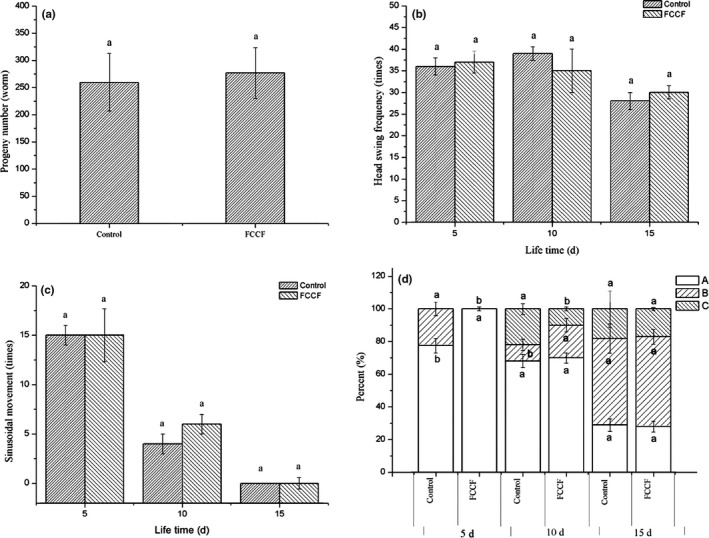Figure 5.

Effects of different treatments on physiological processes of Caenorhabditis elegans. (a) The progeny number of each worm was counted until the parental worms were dead or stopped producing progeny. The head swing frequency (b), sinusoidal movement (c), and body movement (d) were counted under a dissecting microscope for 30 s on the 5th, 10th, and 15th days of worms. In body movement, worm behavior was classified as “A” (youthful, symmetrical, spontaneous movement), “B” (less smooth, uncoordinated movement, must be prodded frequently), or “C” (sway only head or tail if prodded). During the same period, the different letters (a, b) of different treatment groups have significant differences (p < .05). Date represent means ± SD of three independent experiments (N = 3)
